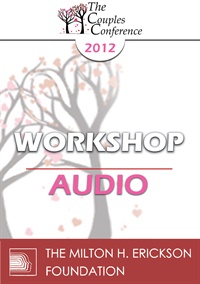CC12 Workshop 04 – When One Says “Divorce” and the Other Says “Let’s Try.” A New Way to Work with Mixed-Agenda Couples – William Doherty, PhD
- Average Rating:
- Not yet rated
- Topic Areas:
- Divorce | Workshops | Couples Therapy | Marriage
- Categories:
- Couples Conference | Couples Conference 2012 | Pioneers in Couples and Family Therapy
- Faculty:
- William Doherty, PhD
- Duration:
- 1:59:01
- Format:
- Audio Only
- Original Program Date:
- Apr 27, 2012
- License:
- Never Expires.
Description
Description: This workshop will identify the common mistakes in working with mixed-agenda couples (one leaning out and the other leaning in), and will teach you a protocol for “Discernment Counseling” to help clients make a decision that has integrity for all involved and that improves the odds that couples will try therapy to heal their broken bond.
Educational Objectives:
- Identify the most common mistakes therapists make in working with couples that present with opposite wishes for staying together versus breaking up.
- Discuss a protocol for working with these mixed agenda couples.
*Sessions may be edited for content and to preserve confidentiality*
Credits
Handouts
| Timestamped Transcript (1.4 MB) | 36 Pages | Available after Purchase |
Faculty

William Doherty, PhD Related Seminars and Products
William J. Doherty is an educator, researcher, therapist, speaker, author, consultant, and community organizer. He is Professor and Director of the Marriage and Family Therapy Program in the Department of Family Social Science, College of Education and Human Development, at the University of Minnesota, where he is also an adjunct Professor in the Department of Family Medicine and Community Health.


